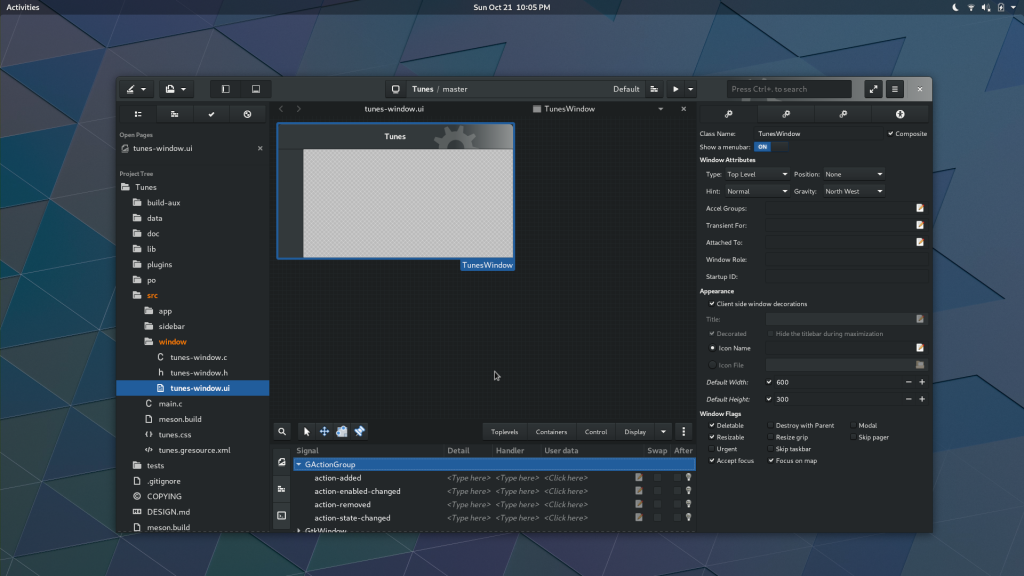One of the things we’ve wanted in Builder for a while is a designer. We’ve had various prototypes in the past to see how things would have worked out, and mostly just punted on the idea because it seemed like Glade served users better than we would be able to directly.
Last week, Juan Pablo, Matthias Clasen and I met up in San Francisco to see what we could do in the short term. We discussed a couple of options that we have going forward.
- Integrate glade 3 into Builder using libgladeui.
- Integrate glade 3 using the external Glade application and use D-Bus to inter-operate.
Like all projects, we have some constraints.
- Gtk 4 is in progress, and our hope is that most new application development moves towards that because the benefits are outstanding. That means the value of a Gtk 3 designer is depreciating.
- Gtk 4 changes many fundamental designs behind the scenes. While much effort has been done to reduce the friction in porting applications, porting an UI designer is no trivial task as they necessarily reach into library internals. It is likely Gtk 4 will require creating a new designer from the ground up. Doing this as part of Gtk itself is probably worthwhile.
- We want the designer to know about all of your .ui files so that it is easier to see widgets created using composition.
- Allow generating signal callbacks into your existing code-base in a variety of languages.
With that in mind, I want to get the maximal benefit with the least amount of time to ship. I made a new plugin for Builder last week that gets us moving in that direction. It still needs more work to integrate with signal editing, templates, and other more advanced Glade features.
Hopefully that happens soon because I know we’ve all been waiting for it. Get it now with the Builder Nightly flatpak.
flatpak install --from https://git.gnome.org/browse/gnome-apps-nightly/plain/gnome-builder.flatpakref

